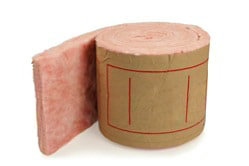Florida Homeowner’s Guide to Adding Attic Insulation

If you have a home built before 1982, your home’s attic is probably under insulated.
This is no good since an under-insulated attic will:
- Allow unwanted heat into your home
- Make your air conditioner run longer
- Increase monthly electric bills
So, if you’re considering adding insulation to your Florida home’s attic, you need to ask yourself these 3 questions to ensure the project is successful.
1) How much attic insulation is already there?
Think of when you go grocery shopping. The first thing you (should) do is check your fridge and pantry to take stock of what you have. The same principle applies to buying attic insulation.
If you’re lucky you may already have enough insulation. If that’s the case, then you’re good!
Assuming your attic’s insulation is spread evenly throughout your attic, here’s your rule of thumb: If your insulation is even with or below your attic’s floor joists, you don’t have enough insulation.
If you don’t have enough, use a measuring tape to measure the depth of the insulation in your attic.
Write it down.
OK, now you've recorded what you have. Now you need to ask...
2) How much do I need to add?
You need to take into account the depth and square footage you need to add.
Insulation levels are measured by R-Value. R-Value is how well insulation can resist heat flow. The higher the R-Value, the better it insulates.
The R-value your home’s attic needs depends on where you live:
ENERGYSTAR, recommends an R-value of R-38 for most homes. That translates to about 12 inches of insulation.
You can see on Home Depot’s website how many inches translates to a certain R-Value:
- 3.5 inches: R-13
- 6 inches: R-19
- 9 inches: R-30
- 12 inches: R-38
Now that you have an idea of the depth you need, you need to measure the width and length of your attic. Multiply the length and width together to get the square footage you need.
Most insulation you buy will have a “sq ft” number for easy reference.
For example: Let’s say you measured your attic, and you realize your attic has about 9 inches (R-30) of insulation and your attic is about 40 sq feet, you’d need at least 3 inches of extra insulation that covers 40 sq ft to get an R-Value of R-38.
Now that you know how much you need, you need to ask...
3) What type of insulation should I add?
For attics, you’re either going to want blankets or blown-in/loose-fill insulation.
Blankets (batts and rolls)
Pros:
- Easier to DIY since you just roll/place them into your attic
- Higher R-Value per inch than loose-fill.
Cons:
- May not fit easily into your attic if the space is awkward
- May not adequately fill minor gaps in your attic, allowing heat to escape and enter your home
Blown-in/Loose-fill
Pros:
- Easily fills nooks and crannies in an attic
- Perfect for adding insulation to already existing insulation to get the exact R-value you need.
Cons:
- Requires special equipment to blow in. So, you either need to rent the equipment or hire a contractor.
- Settles over time, which reduces its R-value.
Get the type that best fits your needs.
Need help?
If you’re unsure about how to add attic insulation, we can help.
Need help putting the blown-in insulation into your attic? Schedule an appointment time online.
Cool Today provides award-winning service to homes and businesses throughout Florida and has locations in Tampa, Orlando, Sarasota, Dunedin, and Naples.